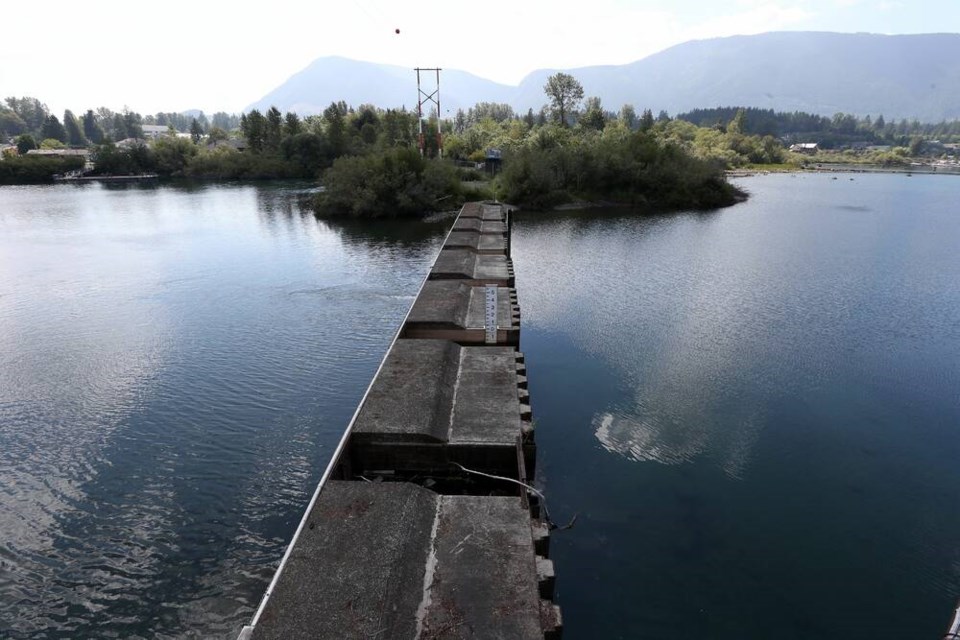After several drought-stricken summers, this year’s cold, rainy spring was met with a sigh of relief by those who care for the Cowichan River.
For once it seemed there was plenty of water stored in the watershed’s natural “bank accounts” — Cowichan Lake and its surrounding mountain snowpack — to keep the river flowing well throughout the dry season.
But as these warm October weeks passed without a drop of rain, water levels dropped and the alarm bells sounded again, bringing fresh concern and urgency to the 30-year effort to raise the Cowichan Lake Weir.
Changing weather patterns, including less snow, and long dry summers are affecting this Canadian Heritage River — from a river so full of fish that Cowichan Tribes elders recall nearly being able to walk across the river on the backs of salmon to years when salmon now need to be trucked upstream for lack of water.
Massive electric pumps have been needed to keep the river flowing in some years; lakeshore residents have seen their docks left high and dry and a mucky band of exposed lakebottom habitat where their beach should be.
Healthy water supplies are also needed for the operation of the mill and the jobs it supports, for recreation, agriculture, tourism and more.
The Cowichan Lake Weir is a seasonal dam that has regulated water flow from spring to fall since 1957. Licensed and operated by Paper Excellence, it is used to store water and control the outflow from the lake into the Cowichan River, providing water for both the pulp mill and the river ecosystem through the dry months.
The mill’s water licence requires that river flows must be maintained above critical fish habitat thresholds, but increasingly, that requirement has been physically impossible to meet due to changing weather patterns. After decades of study, a broad consensus has emerged that we must work together to raise that weir.
If no action is taken, it is likely that in many years, the Cowichan River will not support fall salmon returns. A river without fish is an unacceptable outcome for Cowichan Tribes, who have stewarded and been sustained by the river and its salmon runs for millennia.
Most other southeastern Vancouver Island rivers lack such an opportunity to store water for the vital fall flows that bring the salmon home. The weir on Cowichan Lake has the potential to be the lynchpin of climate mitigation for southern Vancouver Island rivers, but only if it is rebuilt to meet our current climate reality.
This is not a new issue. For more than 30 years people in the region have been conducting studies and calling on authorities to take action.
In 2017-2018, a formal water use planning process was completed, engaging a diverse group of knowledge holders, affected residents and government representatives to review the extensive studies and options.
This group reached a clear consensus for the first time: A new weir is needed to provide 70 centimetres of additional water storage. Building on that, thanks to funding from the Canada-B.C. Salmon Restoration and Innovation Fund, and project leadership from the regional government, the recommended infrastructure upgrade is now designed and shovel-ready.
This year, Cowichan Tribes, the CVRD and Paper Excellence signed a memorandum of understanding articulating our commitment to work as partners to pursue a water conservation licence for the additional water storage.
The time is now for the province to fulfil their commitment to help us complete this project. The new weir fits perfectly in the current government’s goals and mandates — to reconciliation, climate adaptation, economic sustainability and watershed security. We look forward to B.C.’s support to get this project over the finish line. This includes resourcing and assuming potential liabilities associated with the project.
If significant rain does not come soon, the Cowichan River may sadly be on “life support” again this fall, with electric pumps trying to do what nature should, ushering our salmon relatives home to lay their eggs for the next generation.
Doing nothing is not an option. A higher weir is needed, and needed now. This is a golden opportunity to inspire and demonstrate to all British Columbians what a community-driven solution to climate change adaptation and reconciliation looks like.
With all levels of government working together, we can and will safeguard the future of the Cowichan River and the communities that depend on it.
>>> To comment on this article, write a letter to the editor: [email protected]



